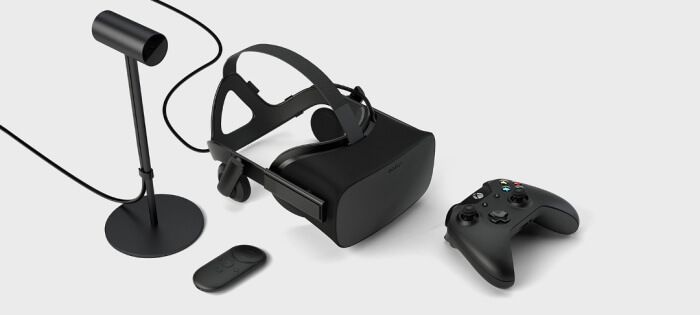
Virtual Reality is Too Expensive
By Rob Gordon 26 January 2016
With the high-end prices for both Oculus Rift and potentially PlayStation VR, there are concerns that the technology will be too expensive to draw in users.
2016 has been long expected to be the year in which Virtual Reality became a truly possible part of gaming. A number of major players in video games and tech have been vying to create the must-have VR headset for would-be users. Now, this new battle of the industry is about to begin – one that has given video game fans and press plenty of cause to get excited.
Most major companies have a horse in this race. Oculus, the creator of the Rift headset, is owned by Facebook and has a deal in place with Microsoft. The Redmond-based tech giant also has its own VR/augmented reality hybrid in the form of the Hololens. Meanwhile, Sony is entering the VR race through PlayStation VR, and Valve joined forces with HTC to create the Vive.
Until recently, the VR race was primarily smoke and mirrors. There were broad promises of the level of content on show, as well as test runs of prototypes such as Alien: Isolation that were not necessarily intended for retail release. Alongside this, estimated price plans appeared, with Oculus tantalizingly putting the Rift headset at around $350.

Just last week, however, the real price of the Rift became apparent. According to the VR firm, the Rift headset would actually cost $599 at launch, which proved to be a massive blow to some of those looking to adopt the technology early. Meanwhile, another estimate has been released for PlayStation VR, with research analysts stating that the headset is likely to fall in the $400-$600 range.
This has proved incredibly disappointing to US gamers who were hoping for a more affordable price – not to mention those living in other countries, where the cost is even greater. The retail charge of these devices looks likely to price out a large number of those interested in the technology. It’s a big ask for people to pick up untested Virtual Reality tech at the cost quoted – particularly with the lack of known content available in advance of release, and even the Oculus Touch controller facing delays.
Quite simply, early adopters and at-release users of this new wave of VR headsets are buying into potential. At the moment, although a handful of titles are set for Oculus and PlayStation VR release, including Rift pre-order bonus EVE: Valkyrie and PlayStation VR’s White Day, the libraries are generally bare. This could be a major concern to gamers – without knowing how successful these devices are going to be, it’s a gamble that could prove costly.
At worst, these price plans won’t just slow sales for the individual devices, but could actually be damaging for the VR industry as a whole. There’s a chance that gamers would rather pick up an entire new console that is already on the market than a headset peripheral, and even Valve has suggested that most PC gamers are unlikely to upgrade for VR. After all, why take the risk on the dream of Virtual Reality when the content library of a different console could be available at a fraction of the cost?

Gamers are, of course, no strangers to taking punts on new content, as each console generation brings with it millions of players willing to pick up a new device at launch. However, with gaming peripherals such as these VR headsets, it’s a different dynamic entirely. The community remembers being burned by multiple pieces of tech claiming to be ‘the next big thing’, with no guarantee that they will get their money’s worth.
One such example has generally been kept to whispers amongst the proponents of Virtual Reality: Nintendo’s Virtual Boy. The console, which lasted less than a year on the market before being discontinued, is a black mark on VR in gaming, and something that all companies entering the VR sphere are looking to avoid. Oculus’ Palmer Luckey recently talked about the impact that the Virtual Boy had on VR space, saying that the console “hurt” the VR industry.
There are, however, a couple of worrying similarities between the current crop of headsets and their doomed predecessor. Both the Rift and the Virtual Boy received a high entry price point for adopters, with Nintendo’s device launching at $179.99 in 1995, whilst the Virtual Boy suffered from a distressing lack of content in its short time on the market. Thankfully, the Rift avoids some of the major flaws of the 1995 console, but there may be enough concerns to put off some users unsure about purchasing the headset at its current price.

Nintendo itself is noticeably absent from the list of top tier companies entering the VR race. It may be that the publisher is still feeling burned after the failure of the Virtual Boy, but Reggie Fils-Aime offers up a different argument. The Nintendo of America president says that current VR is “not fun,” suggesting that “in order for this technology to move forward, you need to make it fun and you need to make it social.”
Although Nintendo has had some failings, including the aforementioned Virtual Boy, it has a startling track record when turning technological advances into something commercially viable. The Wii, which popularized motion control, is one of the most successful consoles of all time, whilst the 3DS ingeniously brought 3D gaming to the handheld market with outstanding success. Other companies may well want to take a look at the company’s strategies if they truly want VR to become more of a popular commercial success than a niche device.
Being seen as an item only for the lifelong gaming crowd is something that these VR headsets will want to avoid, even if at first that premium market is targeted. The history of gaming is littered with cult hardware and software, beloved by ‘true’ gamers but unfortunately doomed to fail through poor sales. Making VR tech simple and popular is vital in the long run.

This is why Oculus’ claim that PlayStation VR is not as “high end” as its own headset might not be a death knell for Sony’s device. If PlayStation VR is a cheaper alternative, allowing easier use and offering a wider library, it could be a deciding factor in its success rather than its failure. In fact, it may well help Sony reach that prediction of 1.9 million units sold.
It’s worth noting that the current high price of the headsets heading to the market is not down to creator greed. Oculus has tried to keep the price of the Rift as low as possible, as Palmer Luckey explained in an apologetic Reddit AMA. However, regardless of the reason for the price, it’s still the same end result for the consumer – and without some assurances on the quality of product and enjoyment, it’s a big risk for some gamers to take.
That’s not to say that the issues held cannot be overcome – nor that, when these headsets launch, they won’t be worth every penny of the asking price. However, at the moment there may well not be enough assurances for would-be users to take that leap of faith. On top of that, and perhaps more worryingly, studios may well not want to jump straight in to VR development without some kind of context surrounding the user base of the devices themselves. It’s vital for VR headset creators to not only get users on board, but also game developers, with the two groups intertwined in providing lasting success for the technology. Valve has allowed pre-assigned developers use of the Vive, and this strategy may go towards helping studios remain sweet on the product.
As it stands, Virtual Reality could go either way, in spite of the majority of the gaming community hoping that it becomes successful. There’s every chance that VR gaming will be the next huge technology in video games, and be the essential purchase for gamers everywhere. However, there’s also the worry that it will fall to the sidelines, joining fellow peripherals such as the Kinect. The growth of VR will entirely depend upon the commercial success of the devices that launch this year – and, like it or not, that will come down to the number of gamers who feel the large lump sum is worth it.
